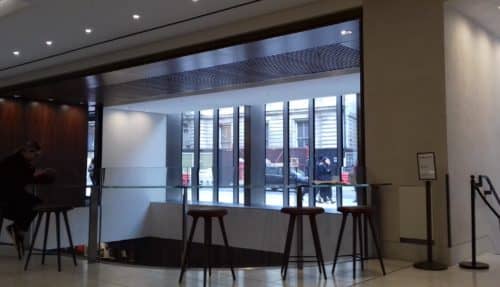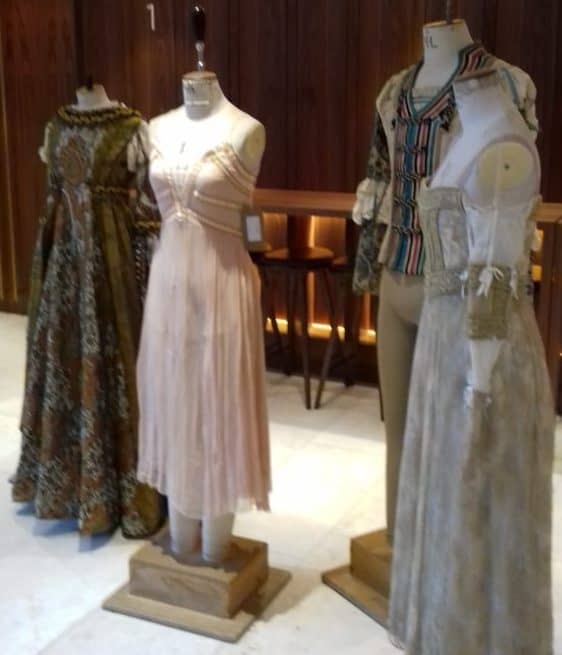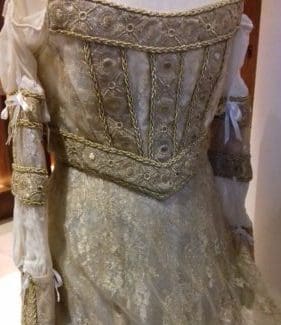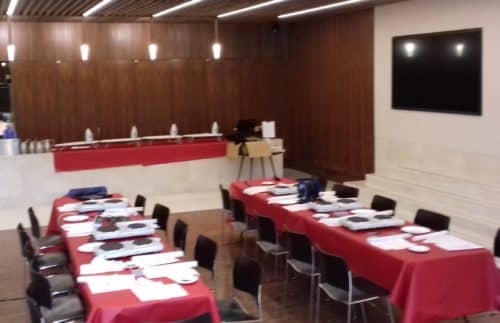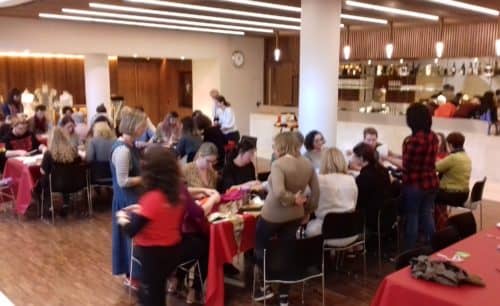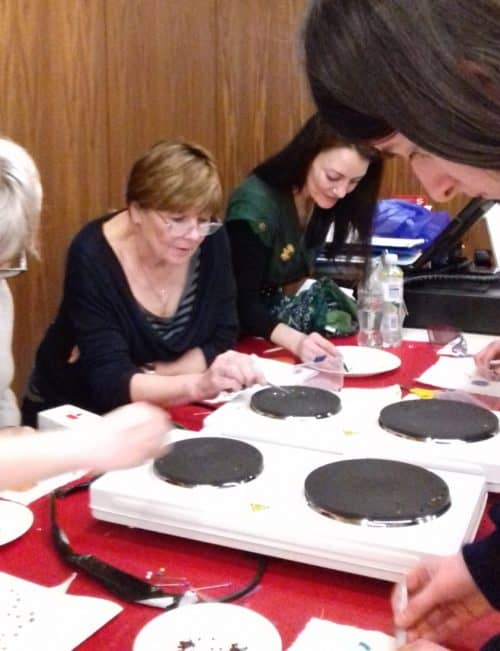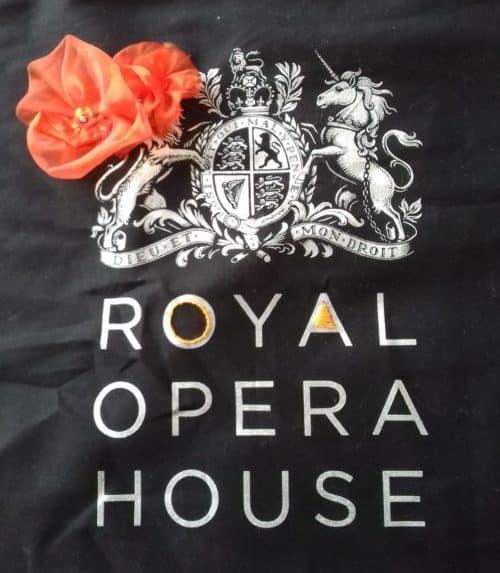In need of diversion this week in particular, I was looking forward to the craft workshop at the Royal Opera House. The publicity offered the incentive to “Get making and try your hand at some of the techniques used to bring ballet and opera productions to life.” ” Work with the talented craftspeople of the Royal Opera House to learn new skills using real materials, tools and process and make ballet- or opera-themed pieces that you can keep.” The publicity photographs showed sewing machines and pattern cutting.
The event was held in the foyer of the Linbury theatre, which was easy for them to partition, although the sound traveling from above made it very difficult to hear the introduction given by the professional staff supervising the event. Costumes from Romeo and Juliet were on display, but no tutu.
42 people were divided into groups and offered the opportunity to try 3 different techniques:- embroidery, appliqué and hot stones. Pieces of calico, embroidery cottons, braid, needles, pins, scissors and fabric off-cuts were all provided, as well as a tote bag. There was a short break after we had sampled the three different skills and then the remainder of the time was spent decorating our tote bag.
To my knowledge, only one person said that they had no understanding of the basic embroidery stitches that we were shown. Herringbone, chain, back, and running stitches as well as French knots. We were shown appliqué using Wonder Web as well as by stitching pieces of contrast material/braid onto the right side of the fabric or the wrong side using cut-outs.
Hot stones are small pieces of glass, faceted like jewels with one flat surface that is coated with glue. The stones are put, using tweezers, glass side down onto hot plates until the glue is visibly melting. They are removed using the point of a pin and placed onto the fabric and pressed into position. This was carefully explained, making sure that we appreciated just how hot the stones would get. Although there were six double hot plates out when we arrived there were only two double plates in operation, making it very difficult for some of us to access them.
Chatting individually to the professional costume makers was very interesting and enabled me to ask some questions that will help me to make my tutu less vulnerable to the manhandling that it gets at some of my talks. I was also advised where I could get further instruction if I wanted to study costume making in more depth.
It must, of course, be difficult to cater for unknown participants other than by offering very basic instruction. Ticket sales were open and not qualified in any way; I’m not sure what I expected. To be fair, it was not very expensive at £12, I had a pleasant afternoon and, have now got the enthusiasm to embellish my tutu, albeit using methods I have used before, but I have also thought of a way that I could use hot stones, probably on the costume that I’m currently making.
I felt sorry for the security staff who just had to sit and watch; like museum staff but without the interesting exhibits and no chance to people watch.
